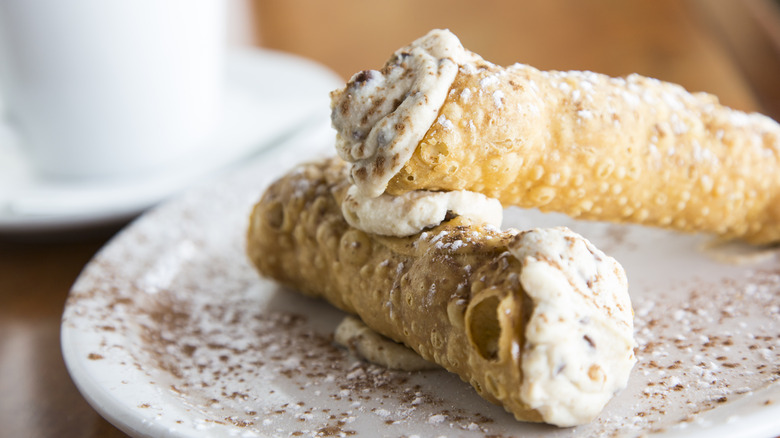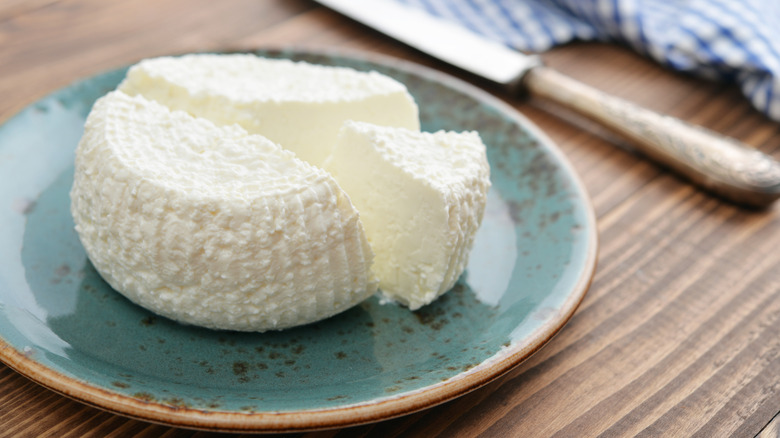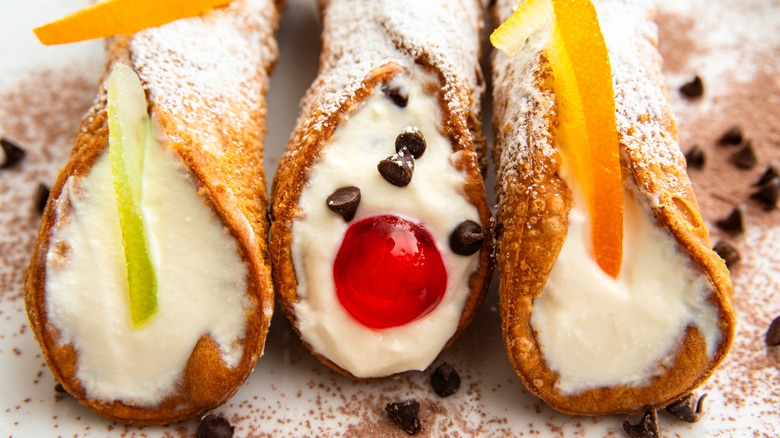Here's What's Actually In Classic Cannoli Filling
When it comes to decadent desserts, there's no beating the cannoli. This sweet, creamy Italian concoction makes for a perfect post-dinner treat, but the dessert can also be enjoyed at breakfast. This iconic food may have originated sometime between the 9th and 11th centuries and likely had Arabic influences based on traditionally included ingredients. These days, cannoli typically consist of a crunchy outer shell, sweet filling, and optional inclusions like nuts and chocolate. And while it may be a bit surprising, the filling that has classically been used in cannoli is usually cheese-based.
Consider that traditional cannoli filling recipes frequently feature ricotta cheese, as opposed to the expected cream or custard found in other types of pastries. However, the dessert has grown to include numerous variations and accompaniments since its inception. Just ponder the differences between American and Italian cannoli to fully understand how far this beloved dessert has come. Although variations on the dessert run the ingredient and flavor gamut, the ricotta cheese filling has proven to be a mainstay.
What is ricotta cheese?
While ricotta is best known for its light texture and subtle flavoring recalling milk, there are several distinct types of cheese to choose from. Ricotta impastata is the version used to fill cannoli and is often referred to as pastry ricotta as a result. Sweeteners and other ingredients can be added to ricotta impastata to create the perfect pastry flavor, and the cheese is whipped vigorously to create a delectable texture. Conversely, ricotta salata is best for savory recipes thanks to the salt added to the cheese.
All versions of ricotta are subject to a very specific cheese-making process. The cheese is made with whey, a by-product of other cheeses. When making cheese, curds are separated from a yellow-tinged liquid, i.e., whey. To make ricotta, this whey is combined with acidic ingredients or allowed to ferment, at which point the mixture is cooked. Ricotta translates to recooked in English, which gives you a clue as to how this cheese is created.
While the ricotta included in this sweet treat is a highlight, it's really an ensemble cast. In addition to the varieties of ricotta used, cannoli can also be subject to variation in flavors and ingredients.
Variations on the traditional cannoli recipe
While ricotta is featured in a wide variety of cannoli preparations (such as the classic Sicilian cannoli), mascarpone is considered an acceptable alternative. Mascarpone is an Italian cheese ideal for both savory and sweet preparations, much like ricotta. By combining heavy cream and acid and then applying heat to the mixture, you get mascarpone's signature sweet and slightly tangy flavor and velvety texture. Instead of ricotta and mascarpone, Venetian cannoli are made with custard, which usually comes in vanilla or chocolate flavors.
Along with fillings, there are many variations when it comes to cannoli toppings. Pistachios and chocolate chips frequently make appearances in the Italian dessert, while the shell itself is sometimes dipped in decadent chocolate. Other additions include walnuts, strawberries, caramel sauce, lemon zest, and many other tasty treats. While the classic recipe has a lot to offer, updated preparations make cannoli a very versatile dessert.


